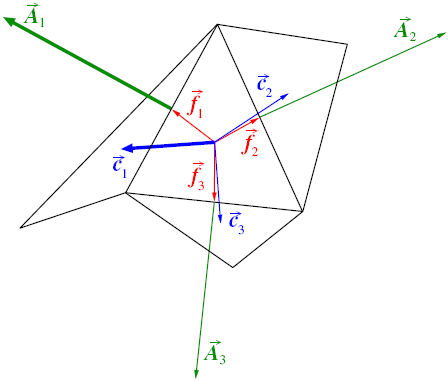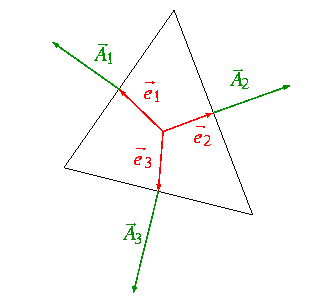Orthogonal Quality
The Orthogonal Quality metric is computed using the face (edge) normal vectors and vectors between centroids of adjacent cells (faces, edges). The range for orthogonal quality is 0 - 1, where a value of 0 is worst and a value of 1 is best.
Orthogonal quality is the default metric when the Physics Type is set to Fluid Dynamics.
The Orthogonal Quality for 3D cells is computed using the face normal vector
(



For each face, the cosines of the angle between 



- For tetrahedral, prism, and pyramid cells, the Orthogonal Quality is the minimum of the orthogonality and (1 - cell skewness).
- For hexahedral cells, the Orthogonal Quality is the same as the orthogonality.
In a similar way, Orthogonal Quality for 2D faces is computed as the smallest cosine
of the angle between the edge normal vector, 


- When the cell is located on the boundary, the vector
across the boundary face is ignored during the quality computation.
- When the cell is separated from the adjacent cell by an internal wall (a
baffle), the vector
across the internal boundary face is ignored during the quality computation.
- When the adjacent cells share a parent-child relation, the vector
is the vector from the cell centroid to the centroid of the child face while the vector
is the vector from the cell centroid to the centroid of the adjacent child cell sharing the child face.
Inverse Orthogonal Quality = 1 - Orthogonal Quality
The orthogonal quality values may not correspond exactly with the inverse orthogonal quality values in Ansys Fluent because the computation depends on boundary conditions on internal surfaces (WALL vs. INTERIOR/FAN/RADIATOR/POROUS-JUMP). Ansys Fluent may return different results which reflect the modified mesh topology on which CFD simulations are performed.


